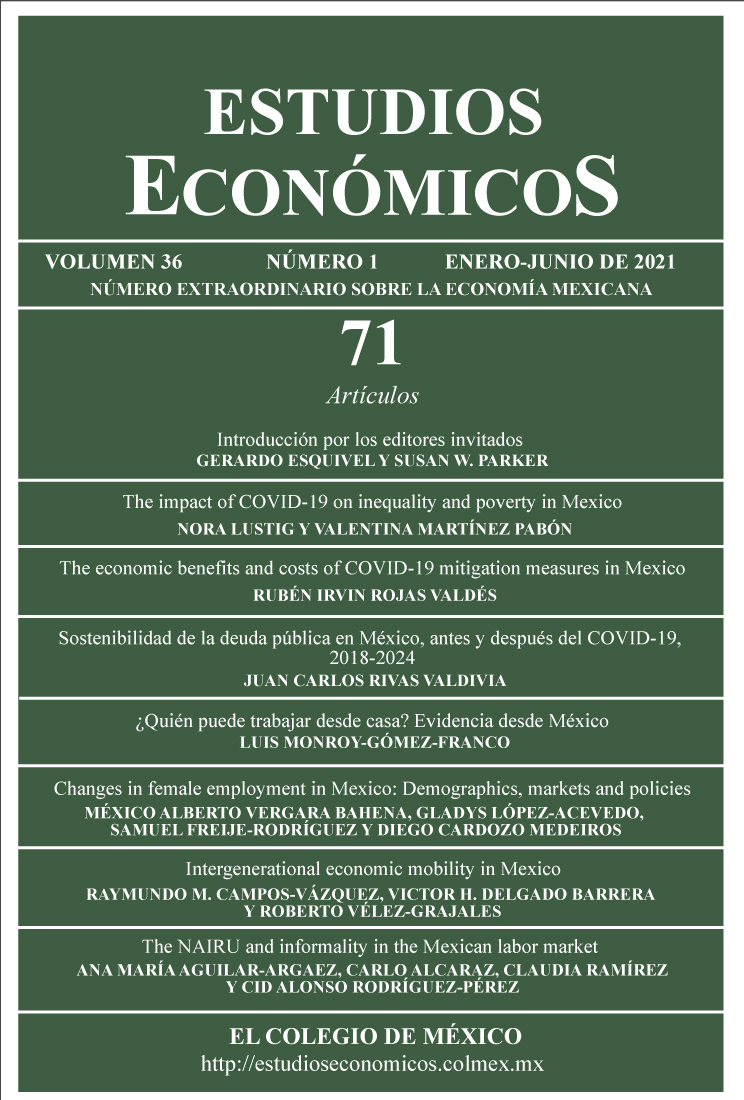Published 2020-10-07
Keywords
- female labor force participation,
- Mexico,
- gender gap,
- female education,
- childcare services
How to Cite
Abstract
Unemployment and labor force participation gender gaps narrowed in Mexico after the 2008 global economic crisis, when female labor force participation (FLFP) increased. This paper aims to understand the FLFP growth and identify the main determinants driving this growth. For that purpose, we estimate a probit model with data from the 2007 and 2017 National Employment Surveys, the year before the crisis, and the year when the unemployment rate returned to pre-crisis levels, respectively. Broadly, our results show that the increasing labor participation of women aged 36 to 65 sustained the growth of overall FLFP, that women’s educational attainment can offset any individual or household obstacle to women’s employability, and that childcare availability significantly increases mothers’ employability.

